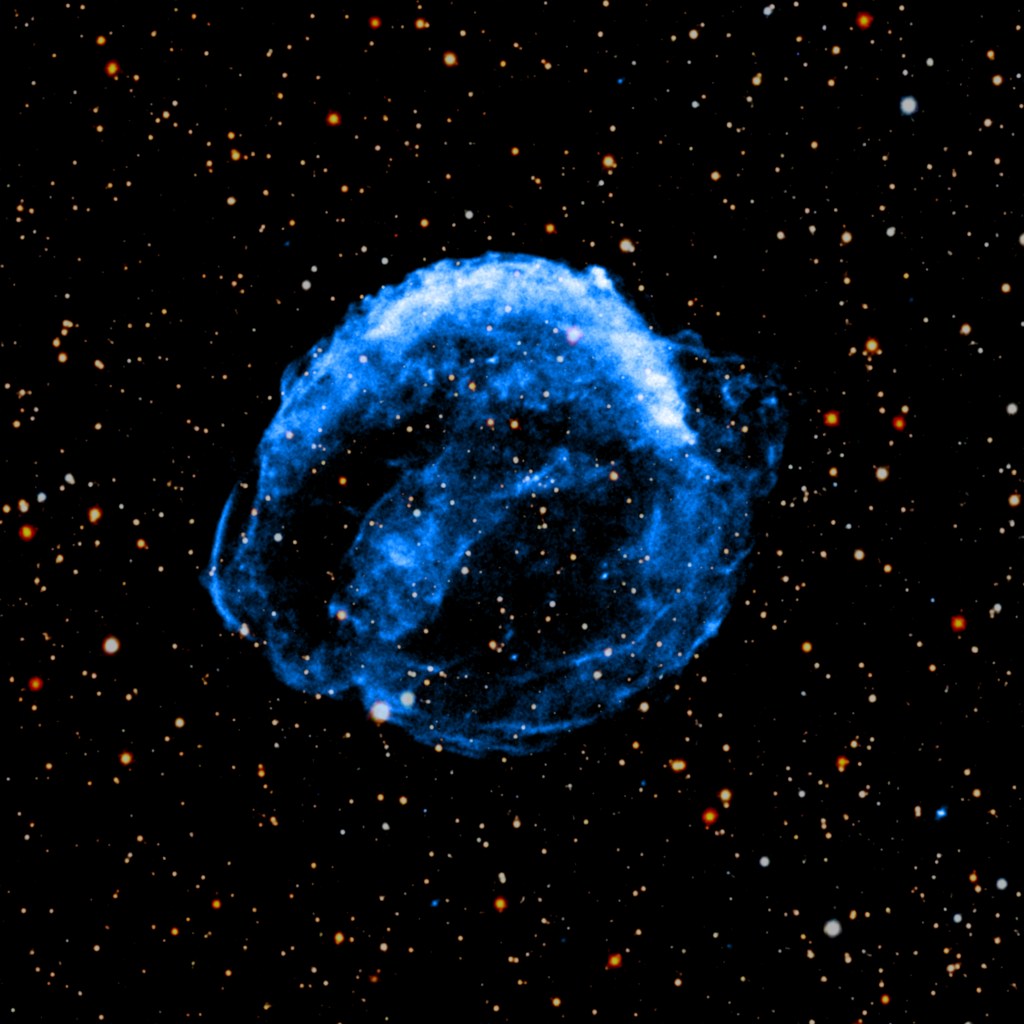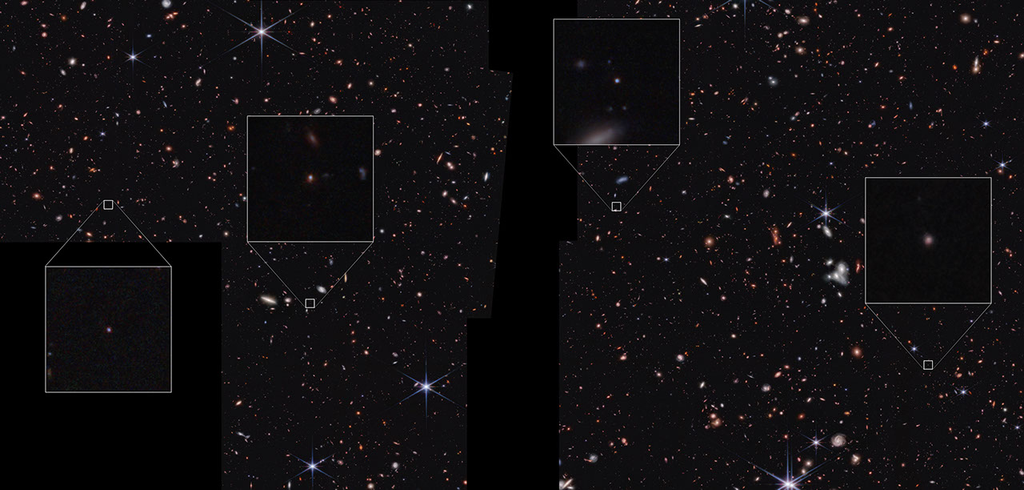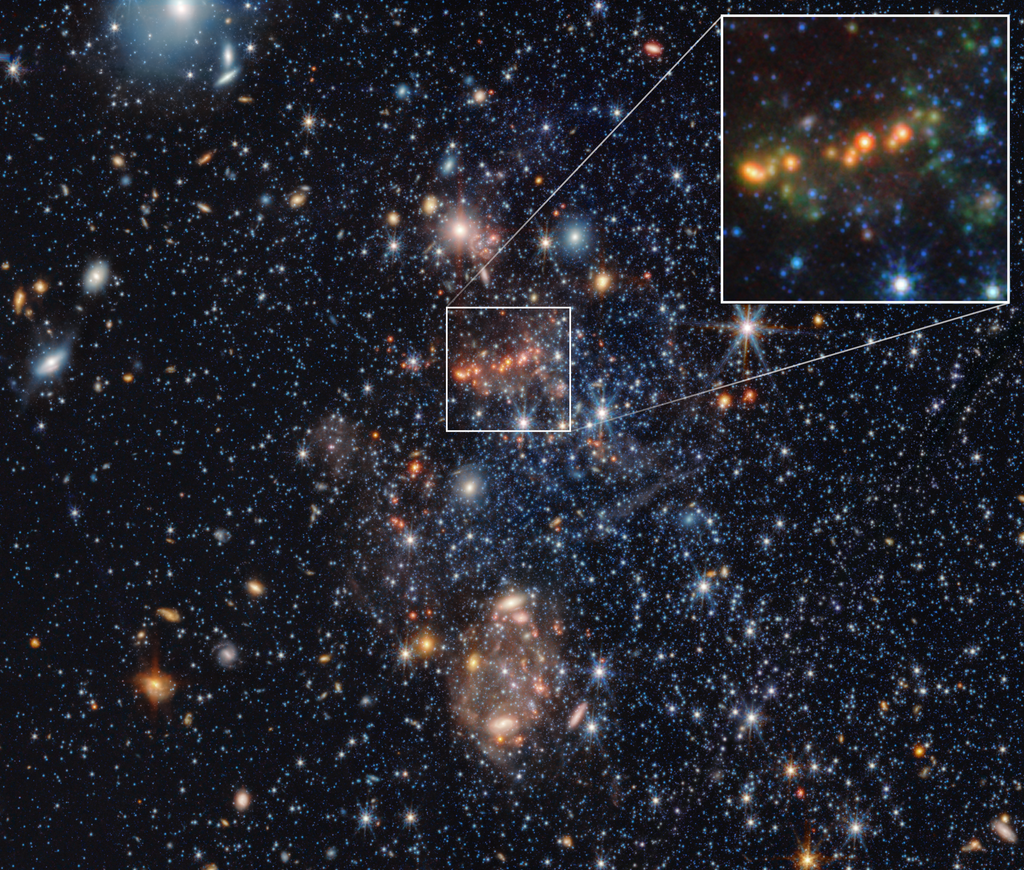1 min read
HST Reveals the Central Region of an Active Galaxy

The refurbished HST has provided this outstanding image of the nuclear region of the galaxy NGC 1068.
NGC 1068 is located at a distance of approximately 60 million light-years and is the prototype of a class of galaxies, known as Seyfert Type 2. In active galaxies, typically the core shines with the brightness of a billion solar luminosities, and the brightness of the core fluctuates over the period of a few days implying that the energy is being released from a region only a few light-days in extent. The most likely source for this enormous amount of energy is a "super massive" black- hole with a total mass of 100 million stars like the Sun.
In the case of NGC 1068, previous HST observations (left) have shown a number of hot gaseous clouds ionized or heated by the intense radiation from the nuclear source. A toms of "donut" of opaque dust and gas orbiting the black hole confines escaping radiation to a diverging beam or "cone" of emission.
The new FOC/COSTAR observations (right) show with unprecedented clarity a much more extensive area of emission, produced by radiation from the active nucleus. An incredible wealth of new and previously unsuspected filamentary detail is also revealed in this near-nuclear gas, embedded within the diffuse emission. The knots and streamers of emission will enable the geometry of this fascinating nuclear region to be understood, and will offer new information on the nature of the clouds themselves.
A comparison between the ultraviolet light and the light emission of the clouds will provide insight into the hidden source of all the energy - perhaps an obscured black-hole.
These data were taken by a team led by Duceio Macchetto of the European Space Agency (ESA) and Space Telescope Science Institute (STScI), and including William Sparks and Alessandro Capetti of STScI, using the Faint Object Camera and COSTAR "combination."
About the Object
- R.A. PositionR.A. PositionRight ascension – analogous to longitude – is one component of an object's position.02h 42m 40.83s
- Dec. PositionDec. PositionDeclination – analogous to latitude – is one component of an object's position.00° 0' 48.39"
- Object NameObject NameA name or catalog number that astronomers use to identify an astronomical object.NGC 1068
- Release DateJanuary 13, 1994
- Science ReleaseHST Reveals the Central Region of an Active Galaxy
- Credit
Share
Details
Claire Andreoli
NASA’s Goddard Space Flight Center
Greenbelt, Maryland
claire.andreoli@nasa.gov

































